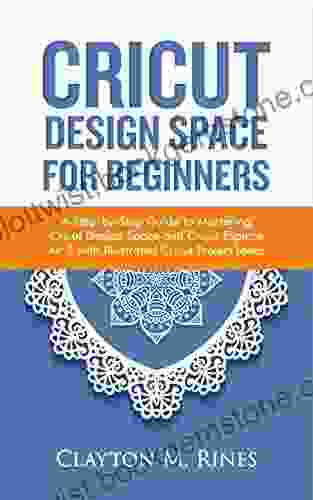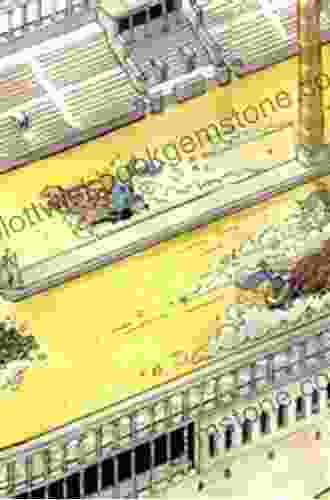The Hippodrome of Constantinople: A Monumental Historical Landmark

The Hippodrome of Constantinople, an awe-inspiring architectural marvel, stood as the heart of social, political, and entertainment life in the Byzantine Empire. This magnificent arena, constructed during the reign of Emperor Constantine the Great in the 4th century, witnessed gladiatorial contests, chariot races, and lavish spectacles. Over the centuries, the Hippodrome evolved into a grand civic space, bearing witness to momentous events and reflecting the splendor of Constantinople, the imperial capital of the Byzantine Empire.
5 out of 5
| Language | : | English |
| File size | : | 10608 KB |
| Text-to-Speech | : | Enabled |
| Screen Reader | : | Supported |
| Enhanced typesetting | : | Enabled |
| Word Wise | : | Enabled |
| Print length | : | 78 pages |
Historical Significance
The Hippodrome was more than just an entertainment venue; it held immense historical significance. It served as a stage for political demonstrations and coronations. The Nika Riots of 532 CE, a violent rebellion against Emperor Justinian I, erupted within its confines, leading to extensive damage and the loss of countless lives. The Hippodrome also played a pivotal role in the Byzantine Empire's diplomatic relations. Foreign dignitaries and envoys were often hosted within its grandstands, showcasing the empire's grandeur and diplomatic prowess.
Architectural Features
The Hippodrome was an architectural marvel, boasting dimensions of approximately 450 meters in length and 130 meters in width. Its vast arena could accommodate an estimated 100,000 spectators. The seating tiers, known as the cavea, were divided into sections based on social status. The lower tiers were reserved for the emperor, the imperial family, and high-ranking officials, while the upper tiers were occupied by the general populace.
At the center of the arena, a low wall known as the spina divided the track into two sections. This spina was adorned with elaborate monuments, fountains, and statues, including the famous bronze quadriga, a four-horse chariot, which later became a symbol of Venice. Two obelisks, one brought from Egypt by Emperor Theodosius I and the other from Alexandria by Emperor Constantine VII, also graced the spina, adding to the Hippodrome's grandeur.
Chariot Races
Chariot races were the most popular form of entertainment at the Hippodrome. These races were fiercely contested by professional drivers known as auriga, who risked their lives for glory and the favor of the crowd. The races were organized into four teams, each associated with a different color: the Blues, Greens, Reds, and Whites. The rivalry between the Blues and Greens was particularly intense, often spilling over into violent clashes outside the Hippodrome.
Other Events
Apart from chariot races, the Hippodrome also hosted a variety of other events and spectacles. Gladiatorial contests, animal fights, and acrobatic performances entertained the crowds. The Hippodrome was also used for military parades and public announcements. Emperors often addressed their subjects from a special platform known as the Kathisma.
Decline and Rediscovery
After the fall of the Byzantine Empire in 1453, the Hippodrome fell into disuse and gradually became covered in soil and debris. Over the centuries, the site was repurposed for various uses, including a horse market and a residential area. It was not until the 19th century that archaeological excavations began to uncover the remains of the Hippodrome, revealing its former glory.
Legacy and Significance
Today, the Hippodrome of Constantinople stands as a testament to the grandeur and sophistication of the Byzantine Empire. Its ruins offer a glimpse into the vibrant past of this ancient city. The Hippodrome remains an important archaeological site and a popular tourist destination, attracting visitors from around the world. Its legacy endures as a symbol of Constantinople's rich history and architectural ingenuity.
The Hippodrome of Constantinople was more than just an arena; it was a living embodiment of Byzantine culture and society. It witnessed triumphs and tragedies, spectacles and riots, and played a pivotal role in the empire's history. Today, the Hippodrome stands as a testament to the grandeur and complexity of the Byzantine Empire, inviting us to explore its rich legacy and immerse ourselves in the vibrant past of one of the world's greatest civilizations.
5 out of 5
| Language | : | English |
| File size | : | 10608 KB |
| Text-to-Speech | : | Enabled |
| Screen Reader | : | Supported |
| Enhanced typesetting | : | Enabled |
| Word Wise | : | Enabled |
| Print length | : | 78 pages |
Do you want to contribute by writing guest posts on this blog?
Please contact us and send us a resume of previous articles that you have written.
 Best Book
Best Book Page Flip
Page Flip Bookshelf
Bookshelf Literary loom
Literary loom Chapter
Chapter Bookish
Bookish PageTurner
PageTurner Bibliophile
Bibliophile Story
Story Inkwell
Inkwell Bookworm
Bookworm Labyrinth
Labyrinth Plot Twist
Plot Twist Prose
Prose Paperback
Paperback Storyteller
Storyteller Sanctuary
Sanctuary Fiction
Fiction Reading
Reading Chronicle
Chronicle Read
Read Isao Honda
Isao Honda Steven Skaggs
Steven Skaggs Lauren Hom
Lauren Hom William G Krejci
William G Krejci Karl Taro Greenfeld
Karl Taro Greenfeld Jessica Holmes
Jessica Holmes Lannah Sawers Diggins
Lannah Sawers Diggins David Ritz
David Ritz Mia Kang
Mia Kang Robin Bayley
Robin Bayley Parshwika Bhandari
Parshwika Bhandari Ralph H Nutter
Ralph H Nutter Mzsassytheauthor
Mzsassytheauthor Beth Tondreau
Beth Tondreau Patti Brady
Patti Brady Greg Manning
Greg Manning Christian Kallias
Christian Kallias Patrick O Sullivan
Patrick O Sullivan Tom Brierton
Tom Brierton Cj Hernley
Cj Hernley Cosimo Yap
Cosimo Yap Charlie Porter
Charlie Porter Sally Hull
Sally Hull Justin D Hill
Justin D Hill Cecilia Aragon
Cecilia Aragon Charlotte Cotton
Charlotte Cotton Patricia Coenjaerts
Patricia Coenjaerts Zlatan Ibrahimovic
Zlatan Ibrahimovic Tara L Thompson
Tara L Thompson Penelope Myrtle Kelsey
Penelope Myrtle Kelsey Jamie Markle
Jamie Markle Chris Wraight
Chris Wraight Eden Redd
Eden Redd Tasha Schuh
Tasha Schuh Charles Dana Gibson
Charles Dana Gibson Martin Wainwright
Martin Wainwright Michael Williams
Michael Williams Loki Renard
Loki Renard Olaudah Equiano
Olaudah Equiano Charles Neider
Charles Neider Ken Lozito
Ken Lozito John F Callahan
John F Callahan Daniel J Boorstin
Daniel J Boorstin Paul Dryburgh
Paul Dryburgh Jeanette Winterson
Jeanette Winterson Christopher De Hamel
Christopher De Hamel Chimamanda Ngozi Adichie
Chimamanda Ngozi Adichie Charles John Cutcliffe Wright Hyne
Charles John Cutcliffe Wright Hyne Maria Coffey
Maria Coffey Robin Cormack
Robin Cormack Queen T
Queen T Simple Language Learning
Simple Language Learning John Dougill
John Dougill Kimberly Elam
Kimberly Elam Ron Reeder
Ron Reeder Chris Mcdonnell
Chris Mcdonnell Cecil King
Cecil King Patti Delano
Patti Delano Stephen Graham
Stephen Graham Jez Stewart
Jez Stewart T Kira Madden
T Kira Madden Clay Boutwell
Clay Boutwell David Archer
David Archer Chloe Garner
Chloe Garner Naomi Raquel Enright
Naomi Raquel Enright Melissa R Kerin
Melissa R Kerin Megan Carr
Megan Carr Christina Courtenay
Christina Courtenay Chuck Palahniuk
Chuck Palahniuk Uma Kelkar
Uma Kelkar Karpov Kinrade
Karpov Kinrade Kate Kozma
Kate Kozma Dr Habib Siddiqui
Dr Habib Siddiqui Kal Penn
Kal Penn Cheri Shanti
Cheri Shanti Lisa Hobman
Lisa Hobman Charles Dickens
Charles Dickens Matt Fox
Matt Fox Erasmo Acosta
Erasmo Acosta Christopher P Lehman
Christopher P Lehman Michael Newberry
Michael Newberry Johnny Molloy
Johnny Molloy M P Verneuil
M P Verneuil Charles Moore
Charles Moore Ellen Warren
Ellen Warren Victor Silvester
Victor Silvester Olivia Drake
Olivia Drake Dan Abnett
Dan Abnett Stuart Woods
Stuart Woods Colette Livermore
Colette Livermore Susan Frohlick
Susan Frohlick Charles Stross
Charles Stross Edward Dolnick
Edward Dolnick David Kadavy
David Kadavy Elliott J Gorn
Elliott J Gorn Paolo Cognetti
Paolo Cognetti Chris Wilson
Chris Wilson Grantlee Kieza
Grantlee Kieza Victoria Buitron
Victoria Buitron Thomas Hollowell
Thomas Hollowell Clara Kramer
Clara Kramer Christopher Hull
Christopher Hull J P Wearing
J P Wearing Laura Stanton
Laura Stanton Claudia La Malfa
Claudia La Malfa Chris Gardner
Chris Gardner Damon Young
Damon Young Rosalie Knecht
Rosalie Knecht Jay Artale
Jay Artale Helen Wenley
Helen Wenley Daniel Keyes
Daniel Keyes Danyel Smith
Danyel Smith Fodor S Travel Guides
Fodor S Travel Guides Christopher Hitchens
Christopher Hitchens Megan Nicolay
Megan Nicolay Richard Kadrey
Richard Kadrey Charlie English
Charlie English David Mcmillan
David Mcmillan Christiane Paul
Christiane Paul Charles Warren Stoddard
Charles Warren Stoddard Jon Amtrup
Jon Amtrup Sarah Thornton
Sarah Thornton Louise Fili
Louise Fili James Spooner
James Spooner Norman Spinrad
Norman Spinrad Stephanie Dray
Stephanie Dray Michael Anderle
Michael Anderle Iain Stewart
Iain Stewart Celia Espelleta
Celia Espelleta Nicholas Taylor
Nicholas Taylor Francis M Higman
Francis M Higman Cicely Berry
Cicely Berry Robert Rath
Robert Rath Michael Warr
Michael Warr Chris Glover
Chris Glover James Oliver Curwood
James Oliver Curwood Teresa Marrone
Teresa Marrone Not For Tourists
Not For Tourists Roger Fawcett Tang
Roger Fawcett Tang Jeff Somers
Jeff Somers Ronen Rybner
Ronen Rybner Clarence King
Clarence King Gail Desberg
Gail Desberg Cherish Amore
Cherish Amore Chavoret Jaruboon
Chavoret Jaruboon Levi Werner
Levi Werner Christopher Hart
Christopher Hart Ella Blake
Ella Blake David Perlmutter
David Perlmutter Tanav Patkar
Tanav Patkar Mike Gagnon
Mike Gagnon John G Hemry
John G Hemry El Ghalia Magazine
El Ghalia Magazine Robert H Mohlenbrock
Robert H Mohlenbrock Jessica N Watkins
Jessica N Watkins Darryl Benally
Darryl Benally Dk Eyewitness
Dk Eyewitness Werner Herzog
Werner Herzog Raymond E Feist
Raymond E Feist Dr Christopher Heath Brown
Dr Christopher Heath Brown Walter Rankin
Walter Rankin Ken Liu
Ken Liu Peter Morgan
Peter Morgan Yuki Shimada
Yuki Shimada Steve Inskeep
Steve Inskeep Morgan Rice
Morgan Rice Weike Wang
Weike Wang Huw Lewis Jones
Huw Lewis Jones Christopher Coates
Christopher Coates Frank Langfitt
Frank Langfitt Tina Sutton
Tina Sutton Karen Mccartney
Karen Mccartney Steven Moffat
Steven Moffat John M Perkins
John M Perkins Eric Franklin
Eric Franklin Steven Cronin
Steven Cronin Charles Yu
Charles Yu Gayle Roehm
Gayle Roehm Chan
Chan Kay Walten
Kay Walten Miles Martin
Miles Martin Tameichi Hara
Tameichi Hara Steve Mcnaughton
Steve Mcnaughton Kanoe Kaye
Kanoe Kaye Don Moore
Don Moore Rosa Say
Rosa Say Tamima Bayhom Daou
Tamima Bayhom Daou Marian Jazmik
Marian Jazmik William Silvers
William Silvers Joanna Elisabeth Jones
Joanna Elisabeth Jones Chinelo Bally
Chinelo Bally Kareem Abdul Jabbar
Kareem Abdul Jabbar Gustavo Arellano
Gustavo Arellano Julian Bound
Julian Bound Robert Kurson
Robert Kurson Elizabeth Vargas
Elizabeth Vargas Nicholas Sparks
Nicholas Sparks Yuri Leving
Yuri Leving Cixin Liu
Cixin Liu Clarissa Mcnair
Clarissa Mcnair Maggie Kate
Maggie Kate Nick Paparone
Nick Paparone Orange Hippo
Orange Hippo Tim Pond
Tim Pond Kay Doherty Bennett
Kay Doherty Bennett Christopher Howard
Christopher Howard Chris Haft
Chris Haft Melissa Gould
Melissa Gould Glenn Lovell
Glenn Lovell Catherine Clinton
Catherine Clinton Charles Nicholl
Charles Nicholl Sam Harrison
Sam Harrison Elizabeth Nyamayaro
Elizabeth Nyamayaro Panos Kompatsiaris
Panos Kompatsiaris Matthew O Duncan
Matthew O Duncan Chris Tatted Strength Luera
Chris Tatted Strength Luera Jason Wilson
Jason Wilson Michelle Space
Michelle Space Charmaine Ross
Charmaine Ross Jonathan Lyons
Jonathan Lyons C Gockel
C Gockel Laura Perryman
Laura Perryman Katlynn Brooke
Katlynn Brooke Chasta Hamilton
Chasta Hamilton Tracey Clapp
Tracey Clapp T Patrick Mcgonegle
T Patrick Mcgonegle Wayne Van Zyl
Wayne Van Zyl Susan Owens
Susan Owens Christopher Reeve
Christopher Reeve Kasey Martin
Kasey Martin Christina Zierold
Christina Zierold Tristan Jones
Tristan Jones John Higgs
John Higgs Nicole Porter Ekdahl
Nicole Porter Ekdahl Chris Forsey
Chris Forsey Jean Haines
Jean Haines Christina Lauren
Christina Lauren Gina Lee Kim
Gina Lee Kim James Abbott Mcneill Whistler
James Abbott Mcneill Whistler Steve Biddle
Steve Biddle Sean Adams
Sean Adams Jackie Isard
Jackie Isard Cheryl R Shrock
Cheryl R Shrock Paul Morand
Paul Morand Nicholas Coleridge
Nicholas Coleridge Chris Martin
Chris Martin Mark Bergin
Mark Bergin Nicky Earwaker
Nicky Earwaker Linda Legarde Grover
Linda Legarde Grover Janna L Goodwin
Janna L Goodwin Heather Webber
Heather Webber Robin Hemley
Robin Hemley Ellen Lupton
Ellen Lupton Gareth Kershaw
Gareth Kershaw Clara Claiborne Park
Clara Claiborne Park Erin Bomboy
Erin Bomboy Kevin Crossley
Kevin Crossley Laura Mckowen
Laura Mckowen Felicia P Roche
Felicia P Roche P R Adams
P R Adams Kim Barker
Kim Barker Jonh Craft
Jonh Craft Helen Dunn Frame
Helen Dunn Frame Lyssa Kay Adams
Lyssa Kay Adams Kenneth Bain
Kenneth Bain Daniel V Runyon
Daniel V Runyon Joan Vassar
Joan Vassar Greg Bear
Greg Bear Chris Kennedy
Chris Kennedy Christine Schmidt
Christine Schmidt Susan H Gray
Susan H Gray Chris Santella
Chris Santella Chris Enss
Chris Enss Jim Kristofic
Jim Kristofic Clayton M Rines
Clayton M Rines Juilene Osborne Mcknight
Juilene Osborne Mcknight Claudia Nice
Claudia Nice Gem Barton
Gem Barton Charissa N Terranova
Charissa N Terranova Jaycee Lee Dugard
Jaycee Lee Dugard Stacy Schiff
Stacy Schiff Leslie S Klinger
Leslie S Klinger Marcus Lewis
Marcus Lewis John Steinbreder
John Steinbreder Dexter Lives
Dexter Lives Cynthia Brideson
Cynthia Brideson Jackie Parry
Jackie Parry Charles Dellheim
Charles Dellheim John Megre Shields
John Megre Shields Cheryl Probst
Cheryl Probst Jordan Goodman
Jordan Goodman Seymour Topping
Seymour Topping Charles Cahier
Charles Cahier J Edward Cornelius
J Edward Cornelius Juno Dawson
Juno Dawson George Orwell
George Orwell Cynthia Helms
Cynthia Helms Charles Soule
Charles Soule Jenni Reavis
Jenni Reavis Brendan Keogh
Brendan Keogh Patricia Weiss Levy
Patricia Weiss Levy Monet Hambrick
Monet Hambrick Nicoli Gonnella
Nicoli Gonnella Jason Smart
Jason Smart Christina Asquith
Christina Asquith David Weaver
David Weaver Henry Louis Gates Jr
Henry Louis Gates Jr William Bligh
William Bligh Jim Mccarthy
Jim Mccarthy H Eugene Bradford
H Eugene Bradford Eleanor Winters
Eleanor Winters Christine Williams
Christine Williams Joann Bassett
Joann Bassett Nicholas Sammond
Nicholas Sammond Chuck Lukacs
Chuck Lukacs Murisa Harba
Murisa Harba Myron Howard Nadel
Myron Howard Nadel Christoph Niemann
Christoph Niemann Bill Markley
Bill Markley Sherryl Woods
Sherryl Woods Ursula Burns
Ursula Burns Danielle Evans
Danielle Evans Donna Williams
Donna Williams Gilad Segev
Gilad Segev Ruth Grace David
Ruth Grace David Yatir Nitzany
Yatir Nitzany Scott Pelley
Scott Pelley Federico Vinciolo
Federico Vinciolo Tom Gasek
Tom Gasek James Gracey
James Gracey Diahann Carroll
Diahann Carroll Janet Bishop
Janet Bishop John Stevens
John Stevens Harlan Coben
Harlan Coben Jeremy Robinson
Jeremy Robinson Soyeung Koh
Soyeung Koh Robert Warren
Robert Warren Joshua Sperling
Joshua Sperling Sharon F Patton
Sharon F Patton Judith Reeves Stevens
Judith Reeves Stevens Robert Louis Stevenson
Robert Louis Stevenson Eleanor Brown
Eleanor Brown Rabia Chaudry
Rabia Chaudry Katie Piper
Katie Piper Patricia Gavin
Patricia Gavin Jeremy Scott
Jeremy Scott Daphne Hicks
Daphne Hicks James M Dunlop
James M Dunlop Cathy Lynn Brooks
Cathy Lynn Brooks Jack Mcdevitt
Jack Mcdevitt Philip Hook
Philip Hook Nikki Solano
Nikki Solano Jeff Finley
Jeff Finley Deborah Vadas Levison
Deborah Vadas Levison Jeff Frazier
Jeff Frazier Celeste Ng
Celeste Ng Gabriella De Ferrari
Gabriella De Ferrari Ellen Datlow
Ellen Datlow Christopher J Earnshaw
Christopher J Earnshaw Erhard Klepper
Erhard Klepper Neda Toloui Semnani
Neda Toloui Semnani Paul Sahre
Paul Sahre Ian Roberts
Ian Roberts Kevin A Codd
Kevin A Codd Margaret Radcliffe
Margaret Radcliffe James Morrow
James Morrow Sue Burke
Sue Burke Richard J Powell
Richard J Powell Dj Davin
Dj Davin Pamela Des Barres
Pamela Des Barres Victor Lavalle
Victor Lavalle Joseph Richard Werne
Joseph Richard Werne Richard Kostelanetz
Richard Kostelanetz Charles E Gannon
Charles E Gannon David Zwick
David Zwick Daniel C Matt
Daniel C Matt Don George
Don George Paul Waddington
Paul Waddington Ricky Tims
Ricky Tims Joanna Henly
Joanna Henly Marcy Ferro
Marcy Ferro Trevor Waugh
Trevor Waugh Paul Austin Ardoin
Paul Austin Ardoin David James
David James Trevor Herriot
Trevor Herriot Claude C Hopkins
Claude C Hopkins Isa Down
Isa Down Byron L Dorgan
Byron L Dorgan Laura Schroff
Laura Schroff John Burrowes
John Burrowes Stan C Smith
Stan C Smith Christian Cashelle
Christian Cashelle David Koenig
David Koenig Charmaine Pauls
Charmaine Pauls Ariana Godoy
Ariana Godoy Dem Mikhailov
Dem Mikhailov Tom Bergeron
Tom Bergeron Chris Derochie
Chris Derochie Kai Harris
Kai Harris K Patrick Donoghue
K Patrick Donoghue Talek Nantes
Talek Nantes Greg Young
Greg Young Mia Sosa
Mia Sosa Henry Porter
Henry Porter Guido Sperandio
Guido Sperandio Charles Greacen
Charles Greacen Charlotte Amelia Poe
Charlotte Amelia Poe Chris Frost
Chris Frost Lindsay Williams
Lindsay Williams Ciena Foxx
Ciena Foxx Oksana Marafioti
Oksana Marafioti Elizabeth Lunday
Elizabeth Lunday Joe Greer
Joe Greer Marc Hendrickx
Marc Hendrickx Janet Evanovich
Janet Evanovich Terry Mixon
Terry Mixon Colin Valentine
Colin Valentine Jenna Rainey
Jenna Rainey Susie Hodge
Susie Hodge Linda Holmes
Linda Holmes Pixie Unger
Pixie Unger Spencer Sekyer
Spencer Sekyer Stuart Ross
Stuart Ross Edmund De Waal
Edmund De Waal Cecilie Okada
Cecilie Okada Marjan Kamali
Marjan Kamali Ceidrik Heward
Ceidrik Heward Chuy Renteria
Chuy Renteria Chelsea Ward
Chelsea Ward J Torres
J Torres David Housewright
David Housewright Walidah Imarisha
Walidah Imarisha Sarah Cords
Sarah Cords Cholly Atkins
Cholly Atkins Sean Robins
Sean Robins Cheryl Pallant
Cheryl Pallant Chris Pallant
Chris Pallant Olan Thorensen
Olan Thorensen Tony Walsh
Tony Walsh Shirley Adams
Shirley Adams Stacy Thomas
Stacy Thomas Nick Haskins
Nick Haskins Victoria Twead
Victoria Twead Cherie Burns
Cherie Burns Kwasu David Tembo
Kwasu David Tembo Daniel Colter
Daniel Colter Claire Wilcox
Claire Wilcox Victor Davis Hanson
Victor Davis Hanson Mikesha Fuller
Mikesha Fuller Katherine Davidsen
Katherine Davidsen Paul Bellow
Paul Bellow K A Albury
K A Albury Nick Dawson
Nick Dawson Charles N Li
Charles N Li Robin Ratchford
Robin Ratchford Laurell K Hamilton
Laurell K Hamilton Claude Brown
Claude Brown Nell Irvin Painter
Nell Irvin Painter Vince Flynn
Vince Flynn Kate Brideau
Kate Brideau Joshua Samuel Brown
Joshua Samuel Brown Kenneth Conibear
Kenneth Conibear Rick Furphy
Rick Furphy Colin Powell
Colin Powell Chip Kidd
Chip Kidd Jerome K Jerome
Jerome K Jerome Jan Wong
Jan Wong J A Jernay
J A Jernay Chris Welles Feder
Chris Welles Feder Sarah Moss
Sarah Moss Pauline Baer De Perignon
Pauline Baer De Perignon Christopher Butler
Christopher Butler Martin J Smith
Martin J Smith Vicki Mcmurry
Vicki Mcmurry Francesco Lo Iacono
Francesco Lo Iacono Dr Constance Mcintyre
Dr Constance Mcintyre Persi Diaconis
Persi Diaconis Michael Atamanov
Michael Atamanov Carol Bolt
Carol Bolt Chris Harrison
Chris Harrison Katie Booth
Katie Booth Jason Krumbine
Jason Krumbine Kostya Kennedy
Kostya Kennedy James Clarke
James Clarke David Lee Corley
David Lee Corley Brenda Mohammed
Brenda Mohammed David L Sloan
David L Sloan Robert Hughes
Robert Hughes Celeste Granger
Celeste Granger Michael Arditti
Michael Arditti Walter Tevis
Walter Tevis James Joe Arce Espinoza
James Joe Arce Espinoza Simon Doonan
Simon Doonan Eric Seale
Eric Seale Claire M L Bourne
Claire M L Bourne Julie Gregory
Julie Gregory Cheryl Wills
Cheryl Wills Gavin Francis
Gavin Francis Thomas Cahill
Thomas Cahill Dan Tirels
Dan Tirels John Richard Stephens
John Richard Stephens Michelle Heffner Hayes
Michelle Heffner Hayes Cheryl Briggs
Cheryl Briggs Martin Olson
Martin Olson Jeffery Deaver
Jeffery Deaver Christopher Busta Peck
Christopher Busta Peck Christine Feehan
Christine Feehan Patrick Suskind
Patrick Suskind Charles H Dyer
Charles H Dyer India T Norfleet
India T Norfleet Judy Temes
Judy Temes Graham Mackintosh
Graham Mackintosh Richard Rand
Richard Rand Charlotte Mullins
Charlotte Mullins Geoffrey Jones
Geoffrey Jones Helen Greathead
Helen Greathead Chris Mcmorran
Chris Mcmorran Clarence Boulay
Clarence Boulay Charlaine Harris
Charlaine Harris Claire Chao
Claire Chao Lamont Lindstrom
Lamont Lindstrom Edita A Petrick
Edita A Petrick E L Strife
E L Strife Cia Sautter
Cia Sautter John Ringo
John Ringo Cathy Johnson
Cathy Johnson Philippe Lhez
Philippe Lhez Richard Erdoes
Richard Erdoes Greg Smrdel
Greg Smrdel Christina C Jones
Christina C Jones Chris Gabbard
Chris Gabbard Erica Armstrong Dunbar
Erica Armstrong Dunbar Richard Glazier
Richard Glazier Ciara Cole
Ciara Cole Howard Ball
Howard Ball Paul Lagreca
Paul Lagreca Clara Silverstein
Clara Silverstein
Light bulbAdvertise smarter! Our strategic ad space ensures maximum exposure. Reserve your spot today!

 Braeden HayesAnalyzing Manchild In The Promised Land: Understanding Race, Identity, and...
Braeden HayesAnalyzing Manchild In The Promised Land: Understanding Race, Identity, and...
 Gregory WoodsEvery Breath: A Journey of Love, Loss, and Second Chances in Nicholas Sparks'...
Gregory WoodsEvery Breath: A Journey of Love, Loss, and Second Chances in Nicholas Sparks'... Jackson BlairFollow ·3.1k
Jackson BlairFollow ·3.1k Stephen KingFollow ·12.7k
Stephen KingFollow ·12.7k Corbin PowellFollow ·17.3k
Corbin PowellFollow ·17.3k Jack PowellFollow ·13.8k
Jack PowellFollow ·13.8k Tyrone PowellFollow ·7.8k
Tyrone PowellFollow ·7.8k Corey HayesFollow ·6.9k
Corey HayesFollow ·6.9k Dave SimmonsFollow ·7.6k
Dave SimmonsFollow ·7.6k Deacon BellFollow ·3.2k
Deacon BellFollow ·3.2k

 John Grisham
John GrishamTravel Enlightens: Four Brief Essays
Essay 1: Travel as a Window to the...

 Dominic Simmons
Dominic SimmonsCricut Design Space for Beginners: A Comprehensive Guide...
Cricut Design Space...

 Carson Blair
Carson BlairFairy Tale Archetypes in Eight Horror and Suspense Films:...
Fairy tales, with their...

 Wade Cox
Wade CoxThe Complete Diving Guide To Sint Eustatius
Sint Eustatius is a...

 Curtis Stewart
Curtis StewartOnce Were the Happy Isles
A Journey Through the Heart...
5 out of 5
| Language | : | English |
| File size | : | 10608 KB |
| Text-to-Speech | : | Enabled |
| Screen Reader | : | Supported |
| Enhanced typesetting | : | Enabled |
| Word Wise | : | Enabled |
| Print length | : | 78 pages |










